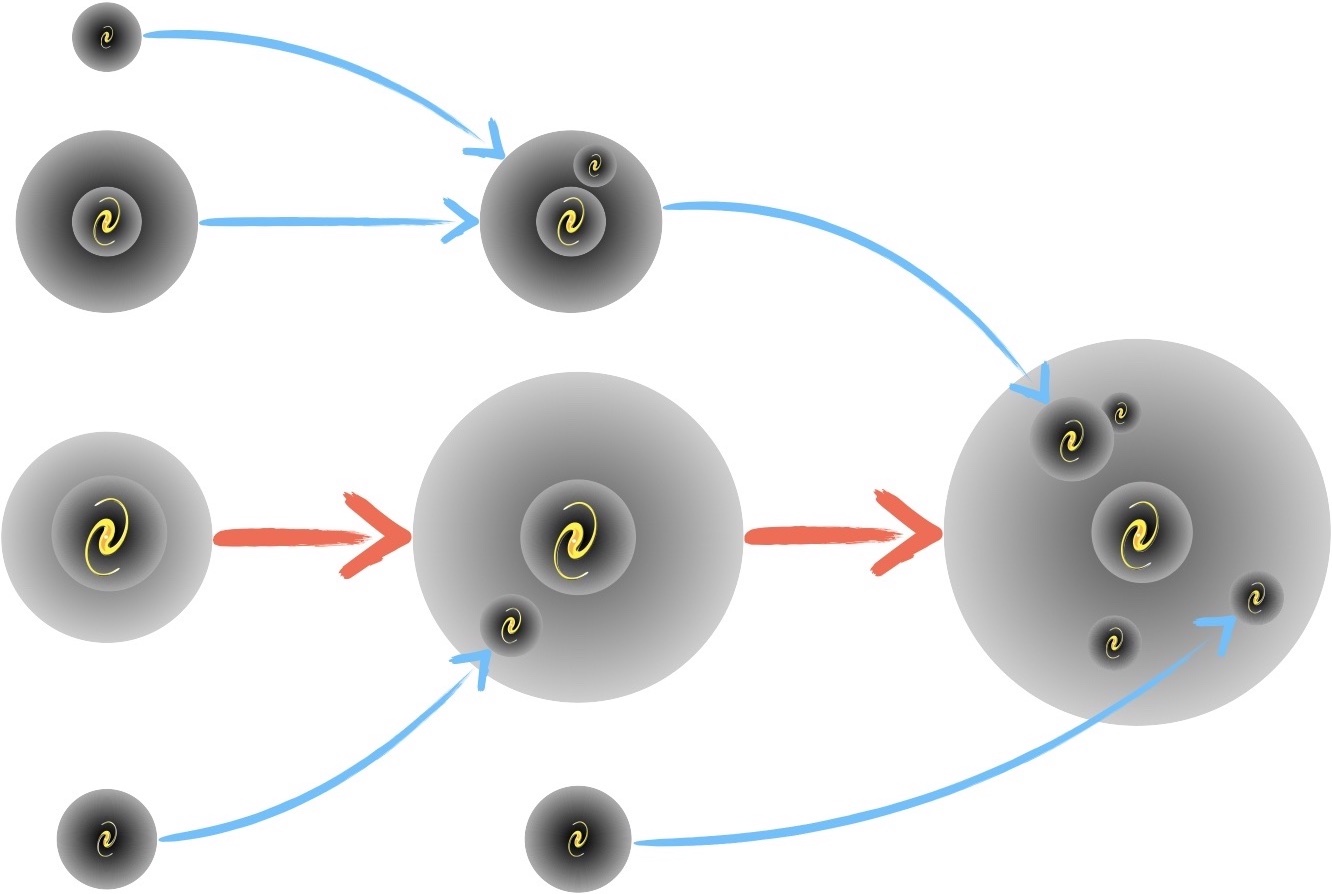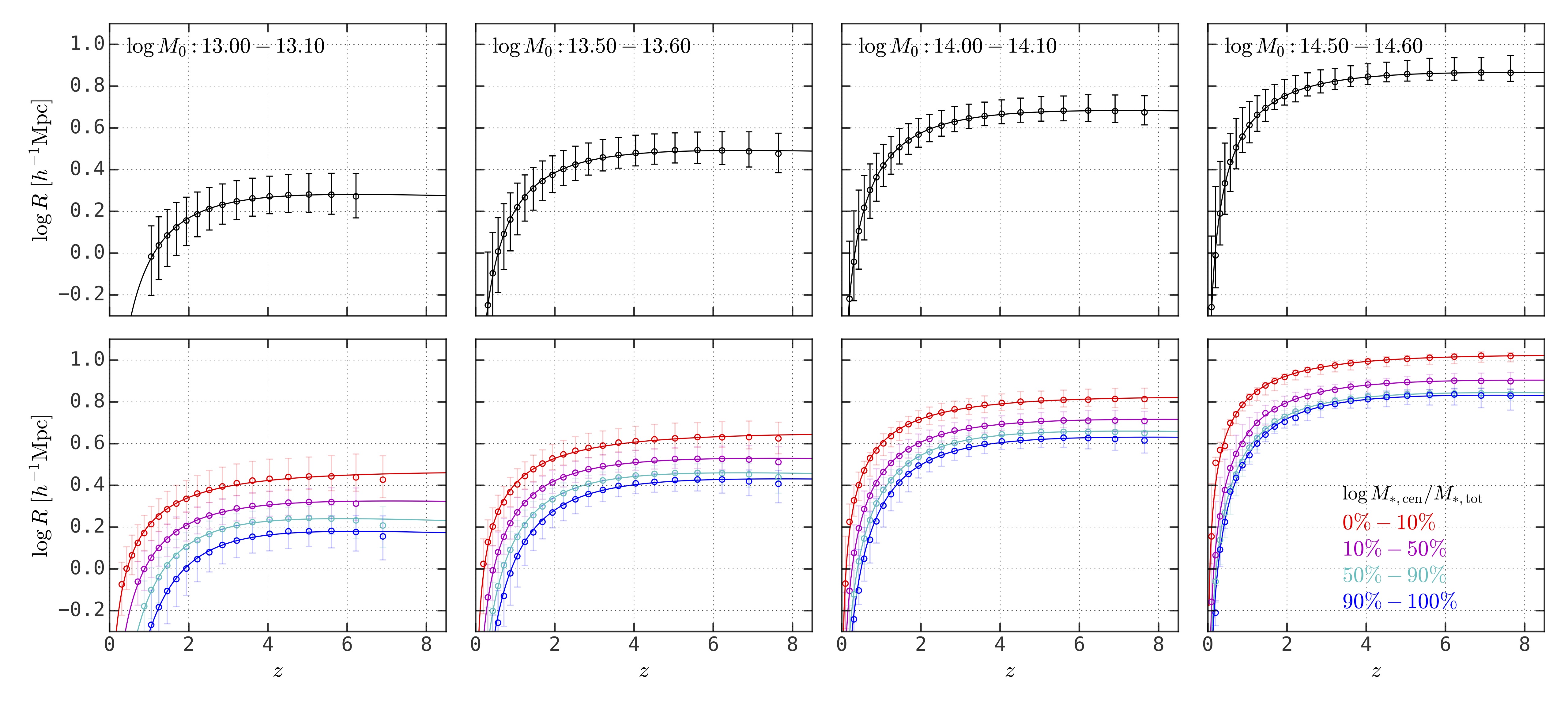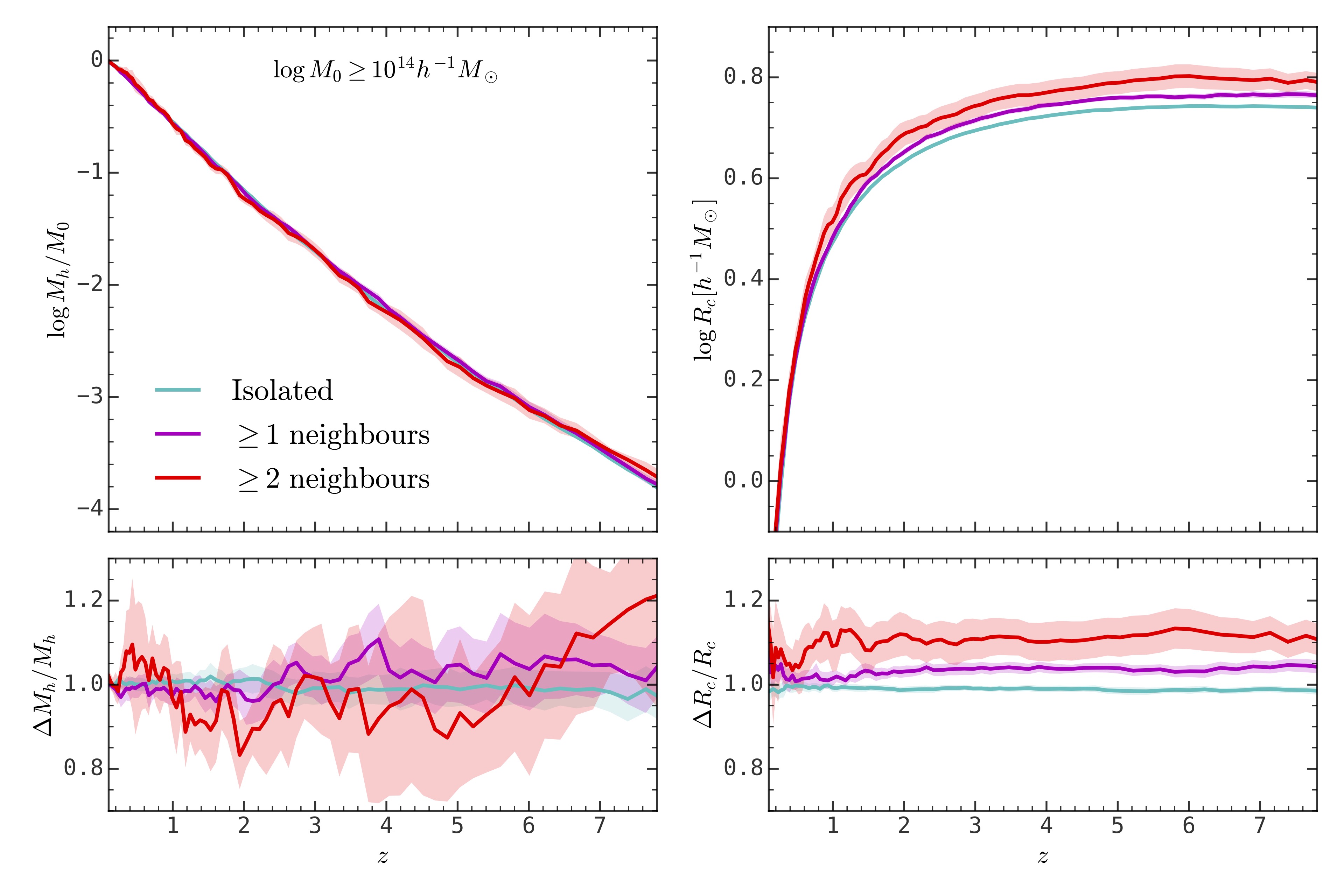Characterize the assembly of dark matter halos with the protohalo size history
Sep. 04, 2023
The assembly of dark matter halos can be described by halo merger trees, which are too complex to be understood, nor incorporated into theoretical models, so data compression is required. This blog introduces a novel method to compress the halo merger tree into a linear protohalo size history, and it shows that this compression strategy keeps additional information about halo assembly, compared with the conventional mass accretion history.
This blog is based on arXiv:2309.01039.
Assembly of dark matter halos
Dark matter halos are the building blocks of our Universe, and their assembly proceeds hierarchically: small halos are formed at first from the collapse of primordial overdense regions under gravity, and they merge with each other to assemble large halos. This process can be described by a tree-like structure called halo merger trees. This tree grows from the descendant halo, and splits into multiple progenitors recursively, as shown on Fig. 1.

This tree structure is too complicated to be understood, nor incorporated into the modelling of halo formation and galaxy-halo connection, so data compression is required. The conventional method is to extract the main branch by recursively selecting the most massive progenitor halo, as shown by the red arrows in Fig. 1, and this is referred to as the mass accretion history (Wechsler et al. 2002). This data compression is successful since subsequent studies found that the mass accretion history is tightly related to the clustering and structure of descendant halos (Gao et al. 2005), as well as the properties of hosted galaxies. Therefore, this data compression greatly reduces the complexity and keeps the critical information about halo assembly, so it is successful.
Protohalo size history
The redshift evolution of the protohalo size is an alternative method to compress halo merger trees into linear arrays of histories. To begin with, each halo at $z=0$ has multiple progenitor halos at $z> 0$, and the protohalo is defined as the collection of these halos at a given $z$. The protohalo size is defined as $$R(z)=\sqrt{\frac{\sum_i M_ir_i^2}{\sum_i M_i}}$$ where $M_i$ and $r_i$ are the mass and the distance to the center of mass for $i$-th halo, and the sum is for all halos in the protohalo at the redshift of $z$.

The protohalo size history can be described by a double power-law function, as shown on Fig. 2. At $z> 2$, the protohalos have nearly no evolution in their size, and the massive halos have larger protohalos. At $z\sim 2$, all protohalos begin to shrink and eventually collapse into the descendant halos at $z\sim 0$.
The bottom panels of Fig. 2 show that the protohalo size strongly correlates to the central-to-total stellar mass ratio of descendant halos, where larger protohalos collapse into descendant halos with more substructures and less dominant central galaxies.
Protoclusters
A straightforward application of the tight correlation between the protohalo size and the descendant substructure is to refine the connection between protoclusters and descendant clusters; protoclusters are just protohalos with cluster-size descendant halos.

As shown in Fig. 3, the protocluster size strongly correlates to the central-to-total stellar mass ratio of descendant halos. Once the protoclusters can be identified with their sizes unbiasly estimated, we can use it to refine the connection of protoclusters across cosmic time and link them to descendant clusters at $z\sim 0$. In other words, we can recover the assembly history of galaxy clusters statistically, from which we can also study the evolution of their member galaxies.
Halo assembly bias
Dark matter halos are clustered in the universe, and the clustering strength depends on halo properties. The primary dependence is on the halo mass, where more massive halos are more clustered, and this can be explained with a Gaussian initial density field and the Press-Schechter formalism (Mo & White 1996). Besides, the clustering of dark matter halos also depends on their secondary properties, such as the halo formation time, halo concentration, halo spin, and halo substructure. These dependence is collectively referred to as the halo assembly bias effect, or the secondary halo bias effect. It is noteworthy that the existence of the halo assembly bias effect for some secondary halo property indicates the entanglement of this property and the surrounding environment.

There is one unresolved problem: previous studies find that the halo concentration exhibits strong halo assembly bias effect, while no such effect can be observed on the mass accretion history for cluster-size halos (see the left panels of Fig. 4, also Jing et al. 2007 and Mao et al. 2018). If one believes that the halo structure is determined by their assembly history, then why the halo concentration ''knows'' the surrounding environment without the mass accretion history "knowing" it? Our answer is that the information about the halo assembly bias effect is lost during the data compression from halo merger trees to mass accretion histories. And Fig. 4 shows that this information is captured by the protohalo size history since it strongly correlates to the surrounding environment, as halos with larger protohalo size tend to live in denser regions.
Summary
We propose the protohalo size history as an alternative method to compress halo merger trees. The protohalo size history is also a complement to the conventional mass accretion history for the following reasons. First of all, the main progenitor only occupies a small portion of all progenitor halos at high $z$, while the calculation of protohalo size involves all the progenitor halos. Secondly, the correlation between the mass accretion history and the substructure of descendant halos is rather weak, while the amplitude of the protohalo size history strongly correlates to the central-to-total stellar mass ratio of descendant halos. Finally, for cluster-size halos, the mass accretion history has nearly no correlation to the spatial clustering of dark matter halos, which is the halo assembly bias effect, while the amplitude of the protohalo size history can induce strong halo assembly bias effect.